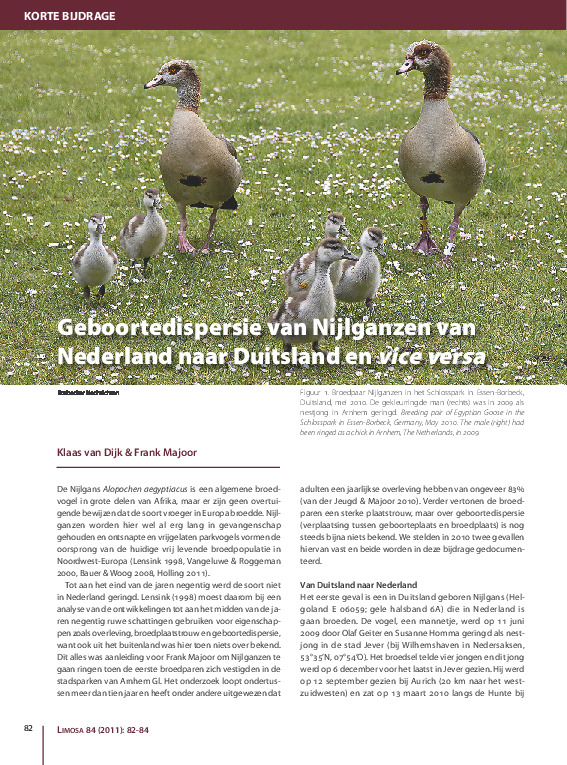ArtikelGeboortedispersie van Nijlganzen van Nederland naar Duitsland en vice versa

Virtually nothing is known about natal dispersal distances of the introduced Egyptian Goose in Europe. In this paper we document two records of long-distance natal dispersal obtained in DBCB. The first record concerns a male born in Arnhem, The Netherlands (51°59’N, 05°54’E), in March DBBK, that bred successfully in Essen-Borbeck, Germany (51°28’N, 06°56’E), 92 km to the south-east, in 2010(Fig. 1) and in 2011. The second record is a male born in Jever, Germany (53°35’N, 07°54’E), in the spring of 2009. The bird was paired with a female that was recorded breeding between 17 June and 12 July 2010 in Groningen, The Netherlands (53°14’N, 06°34’E), 96 km to the west-southwest (Fig. 2). Both breeding records were new settlements, and they fit with a theoretical model proposed by Lensink (1998) that indicated that new settlements can occur at distances of up to 100-200 km. Other ring-recoveries emphasize that movements of 50-150 km are not uncommon for birds of the continental population, as opposed to British birds.
All in all, the data suggest that the continental breeding birds currently form a free-mixing population.
- Uitgever
- Sovon Vogelonderzoek Nederland & NOU (Nijmegen)
- Jaargang
- 84
- Aantal
- 2